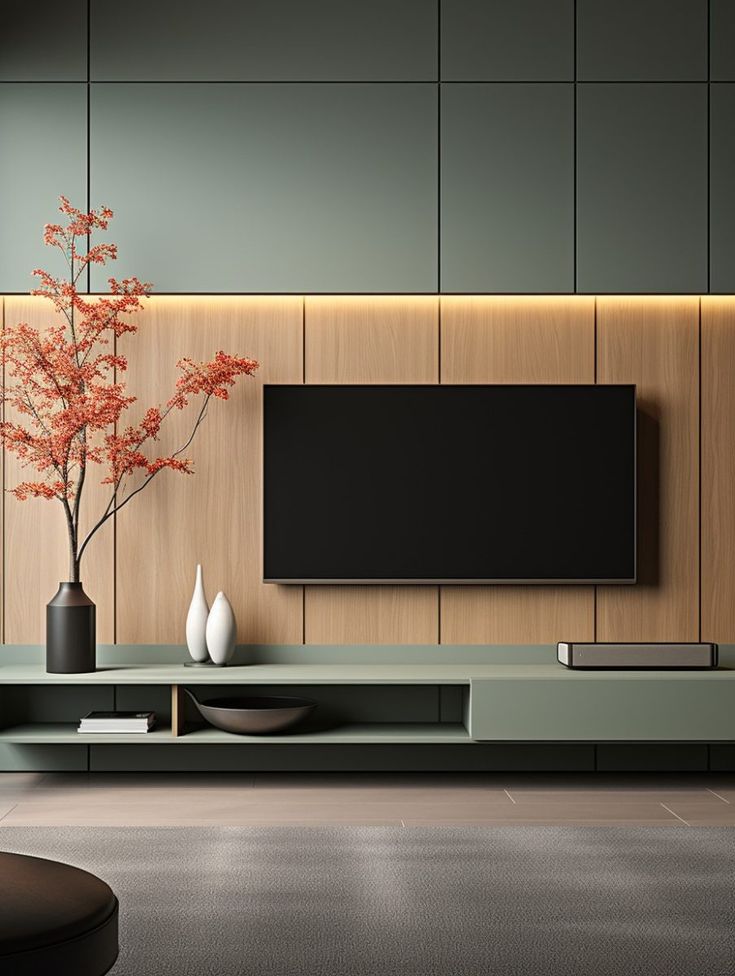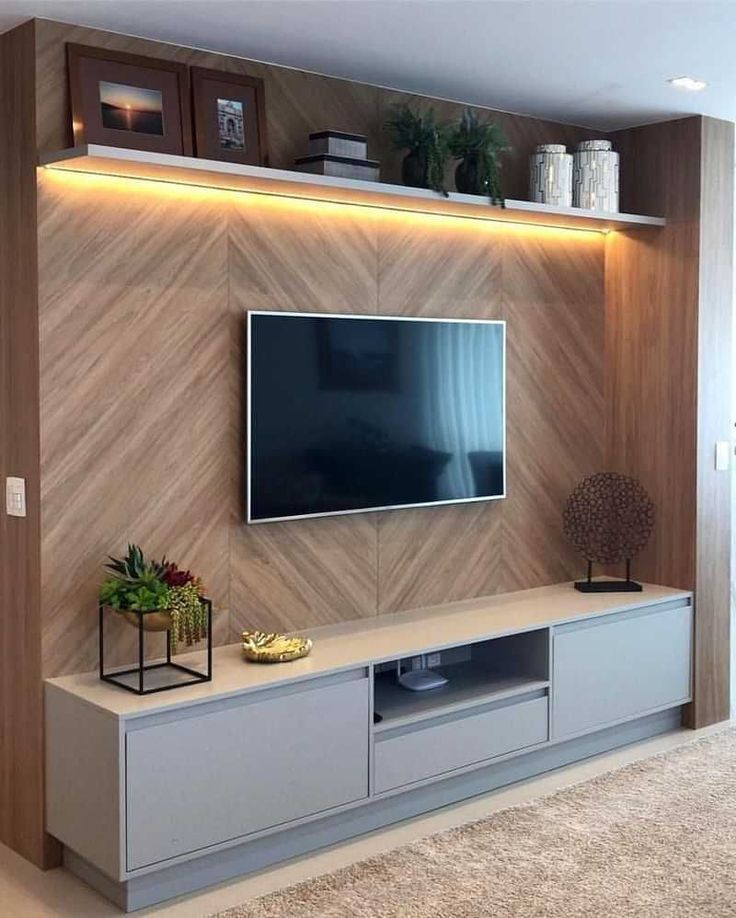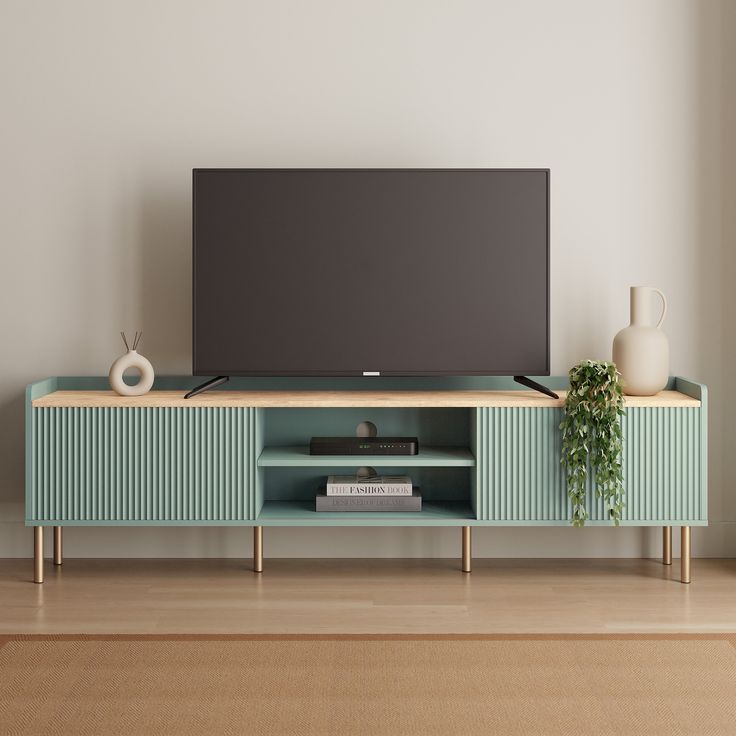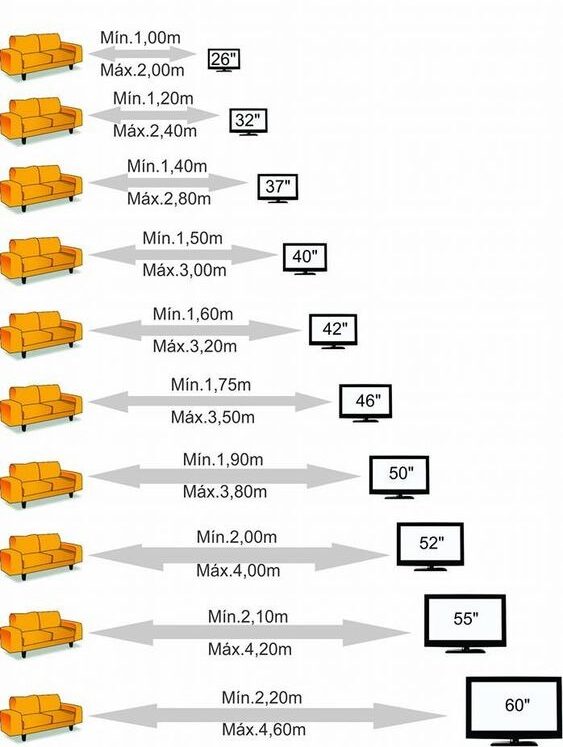The Ultimate
TV Unit Design
Guide
Contrary to what people think of contemporary times, the television isn’t just a gadget. It has become a central figure in the living room that gathers families, friends, or individuals, for movie nights, leisure time, and even family gatherings. But it’s not only about the TV; it’s also about the tv unit designs on which it sits.
The ones that stand out the most and significantly define the room’s look matter. Just like in case of style and functionality, it becomes live or die matter for your living room’s overall ambiance. For today’s lesson, we will focus on the value, elements, shapes, colour suggestions, DIY stuff, and the current trends of TV unit designs.
Importance of TV Unit Designs in the Living Room
TV unit designs serve a dual purpose by fulfilling both functional and aesthetic needs in living spaces. These shelving units go beyond the role of a basic TV stand and act as essential organizers for other auxiliary gadgets and devices. By being mounted and easily accessible, a well-designed layout can help reduce clutter and enhance overall organization in the room.
It not only contributes greatly to the decor of the room but also serves as key visual objects responsible for balancing residential design elements. Whether minimalist, modern, cozy, or traditional, the TV unit designs template highlights the major style of room by defining tone and atmosphere. By choosing the right TV unit designs, you can significantly enhance the room’s ambiance and bring cosiness and orderliness to it.
The utilitarian aspects, TV unit designs are likewise characterized by their aesthetic purpose and ease the eyes of the living room.
Through the establishment of a specific area for fun and relaxation. These structures become a part of climate of the home that shelters everyone (including visitors) and add to the overall sense of comfort. Placement considerations integrated in the design of the TV to eliminate straining of the neck and eyes. Thus, making the viewing experience even more enjoyable.
Additionally, an ornamental structure of the unit, like a silky finish, light installation and decorative abstracting contribute to the aesthetics. From using design minimalism to having bold statement pieces, in one way or another, the TV cabinets represent the style and taste of the owners. Which also makes their living room the center of the room where everything is well thought and the eyes are captured more often.
Different Types of TV Design Units
1. Wall-Mounted Units:
2. Freestanding Units:
3. Built-In Units:
Built-in TV units are custom-designed to seamlessly integrate with the room’s architecture, offering a cohesive and polished look. These units are typically constructed as part of the wall or cabinetry, with the TV inset into the structure for a streamlined appearance.
Built-in units can be tailored to fit specific dimensions and accommodate various design elements, such as shelving, cabinets, or niches for decorative accents. By blending seamlessly with the surrounding space, built-in units create a unified aesthetic and maximize functionality. They are ideal for homeowners seeking a tailored and sophisticated solution that complements the overall design scheme of their home.
Each type of TV design unit offers distinct advantages and appeals to different preferences and spatial requirements. Whether you prefer the sleek, space-saving design of a wall-mounted unit, the versatility of a freestanding piece, or the customizability of a built-in solution. There is a TV unit style to suit your needs and enhance the ambiance of your living room.
Stylish and Functional Features to Look For
Introducing yourself to the world of TV unit designs shopping isn’t that easy, thus, it’s necessary to look for those features. That are highly style in organization with the function. Here’s a detailed elaboration on what to look for. Here’s a detailed elaboration on what to look for:
1. Ample Storage Compartments:
Design of the TV with adequate storage bays promises shelter as well as freedom from filthiness; this is accomplished by a tidy environment module. Research or buy TV stand units which have drawers or shelves to put media accessories, gaming consoles, other items. Adjustable shelves enable you to instruct memory so that all objects placed in are of a different size and shape.
2. Cable Management Solutions:
Cord management widely seems to be ignored, but its importance can never be underestimated for more organizing and neat look. Besides the basic ones like individual cable schedules, wire baskets, hidden compartments that are built in. Purposely to cover up unsightly cables and cords, look for units with these features. Additionally this adds to the look and feel of the area, which maximizes practicality. By get-around trip hazards, improved site line, and resulting in lower maintenance costs.
3. Sturdy Construction Materials:
Withstanding high-heavy items is one of the determining factors when shopping around for a TV stand. As weight is nothing short of an issue when your TV set is concerned. Try avoiding pieces made from materials that can easily be damaged, cheap plywood, particle board, thin-layer laminate or lackluster finish. Instead, opt for units with sturdy construction using solid wood, engineered wood, metal or high-quality laminate. Check kinds of fabrics, materials used for craftsmanship, the construction process used to maintain the product durability and steady construction.
4. Designs that Complement Your Decor Theme:
The TV unit matching the same color setting, decor theme as living room, thus, increasing the elegance of the space. Likewise, think of the style, color, finish of the unit; made easy to match with available furniture and decoratives. It can be contemporary, traditional, minimalist, or eclectic according to your personal style. TV unit that provides harmony for the room and is a follow up of the room’s ambiance would be best.
TV Placement and Positioning Tips
Proper TV placement and positioning are crucial elements in creating an optimal viewing experience for everyone in the room. Here’s a more detailed breakdown of why these factors matter:
1. Positioning at Eye Level:
Placing the TV at eye level when seated ensures that viewers can comfortably watch without straining their necks or eyes. This is particularly important for extended viewing sessions, as improper positioning can lead to discomfort and fatigue. Ideally, the center of TV screen should align with eye level of the primary seating area, whether a sofa, armchair, or sectional.
2. Comfortable Viewing Angles:
Consider the viewing angles from different seating positions in the room. Arrange the furniture so that everyone has a clear view of the screen without needing to crane their necks or adjust their seating constantly. If the room layout doesn’t allow for ideal viewing angles from every seat. Consider incorporating swivel mounts or adjustable TV stands to accommodate different viewing preferences.
3. Avoiding Glare from Sunlight:
Placing the TV in direct sunlight can create glare on the screen, making it difficult to see content clearly. Glare not only diminishes the viewing experience but can also cause eye strain and discomfort. To avoid this, position the TV away from windows or sources of natural light. Or use curtains, blinds, or shades to control the amount of light entering the room. Additionally, consider investing in anti-glare screen protectors or matte finishes on the TV screen to reduce reflections.
4. Minimizing Distractions and Maximizing Immersion:
Take into account the room’s layout and design to minimize distractions and enhance immersion in the viewing experience. Arrange the furniture in a way that directs focus towards the TV area, avoiding clutter or obstacles that may obstruct the view. Consider creating a dedicated entertainment zone, with the TV as the focal point, surrounded by comfortable seating and minimal distractions. Enhance the ambiance with dimmable lighting or blackout curtains to create a theater-like atmosphere during movie nights or immersive gaming sessions.
By paying attention to these aspects of TV placement and positioning. You can create a comfortable, immersive, and enjoyable viewing experience for everyone in the room. Whether they’re watching a movie, cheering for their favorite sports team, or playing video games.
Conclusion
In conclusion, the author underscores that with the help of TV unit designs. The space can be entirely converted according to the living room setting. The article states that a piece of furniture can go beyond simply being a place for the TV, an area that achieves both function and style.
The article suggests treating the decision to invest in a TV unit not as a random choice. But as an opportunity to transform the living room into a space that not only reveals all the characteristics. Even the hidden ones, of the owner but also meets the practical needs of a connoisseur of beautiful things. This statement emphasizes that the sofa, serving as a representative piece of the room. Through thoughtful and consistent design choices, transform your living room into a space for whole family relaxation or fun.





